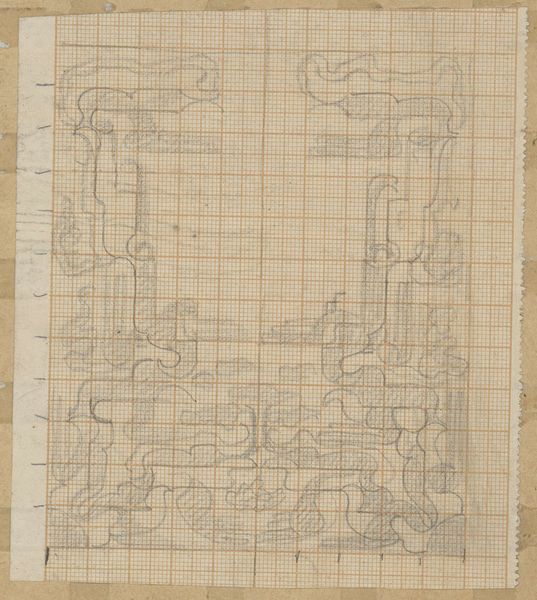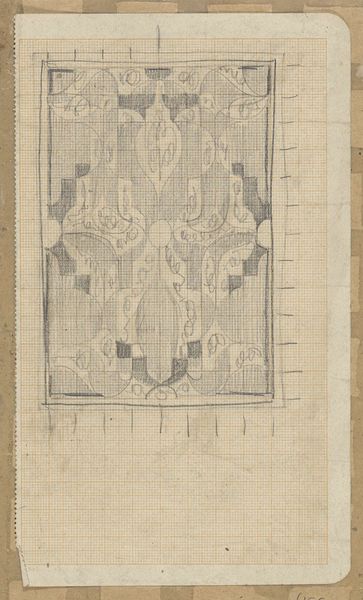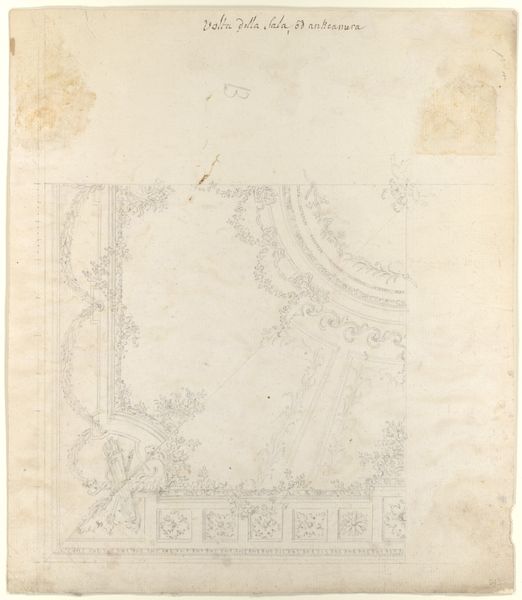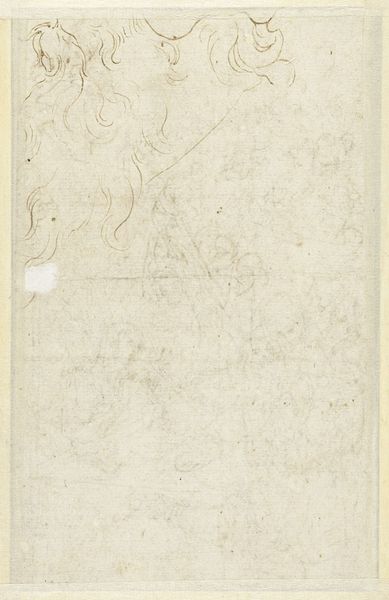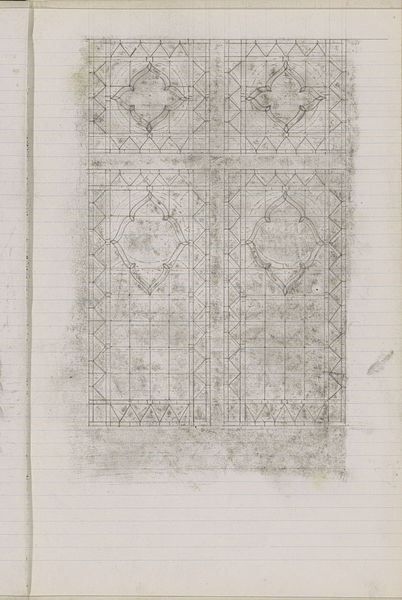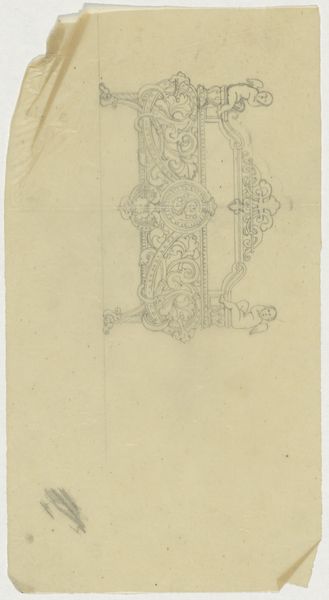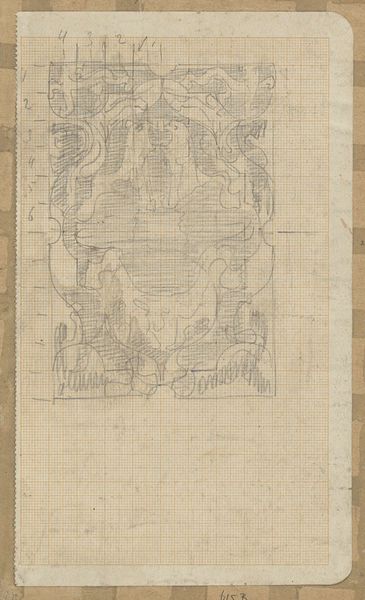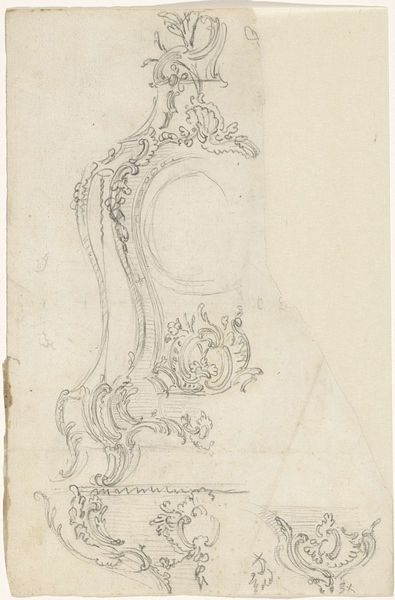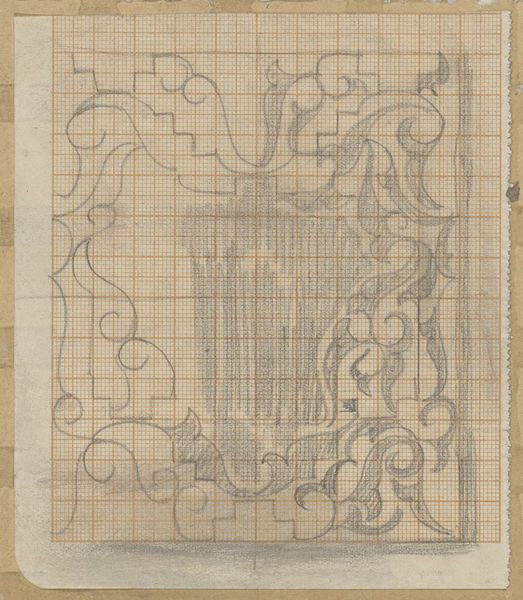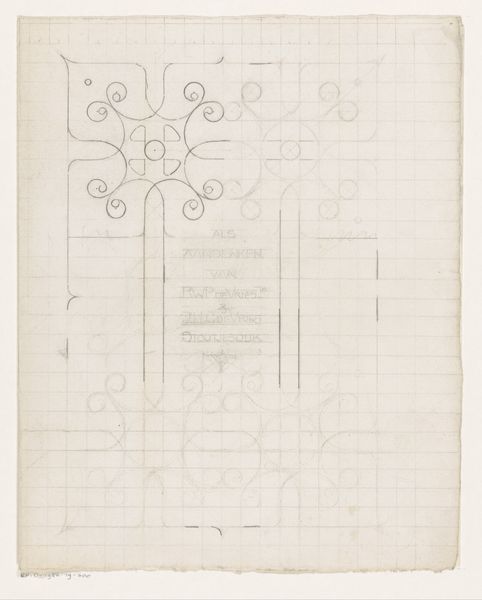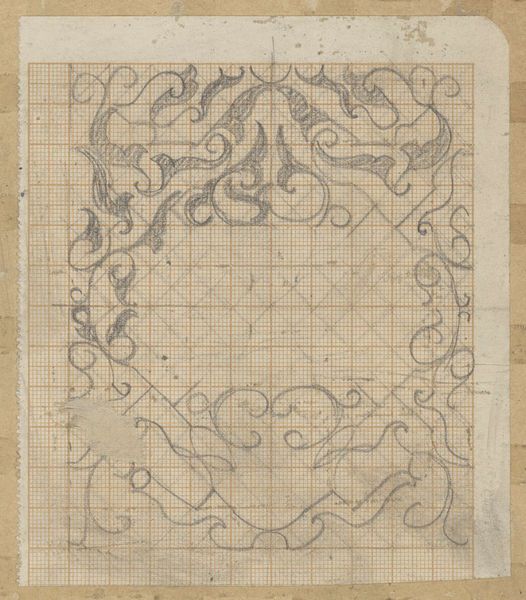
drawing, paper, pencil
#
drawing
#
aged paper
#
toned paper
#
art-nouveau
#
sketch book
#
paper
#
personal sketchbook
#
geometric
#
underpainting
#
pencil
#
line
#
sketchbook drawing
#
watercolour bleed
#
watercolour illustration
#
sketchbook art
#
watercolor
Dimensions: height 206 mm, width 121 mm
Copyright: Rijks Museum: Open Domain
Curator: I find myself immediately drawn to the tentative nature of the lines, the visible grid beneath the drawing suggesting a process of careful construction. Editor: Indeed. Here we have a drawing, entitled "Decoratief ontwerp," by Carel Adolph Lion Cachet, dating roughly between 1874 and 1945. It's rendered in pencil on paper, housed right here at the Rijksmuseum. Curator: Cachet's work compels me to consider the constraints of the grid—how the imposed structure might both limit and enable artistic expression, reflecting perhaps broader societal constraints on creativity and individuality during the Art Nouveau era. I find it to mirror some struggles and constraints women faced who had few options outside of what was permitted or available. Editor: The grid is fascinating, isn't it? It speaks volumes about the material production of the piece. The ready-made quality of the gridded paper signals a specific type of artistic labor, one possibly geared towards mass production or precise replication for industrial application. Think textiles, wallpaper even. The labor becomes about control in its design. Curator: I appreciate you pointing out the textile connection. The fluid, organic shapes layered over the rigid grid creates a tension that mirrors the cultural shifts of the time—a push and pull between industrialization and a yearning for nature. Editor: Absolutely, this aesthetic tension underscores a fundamental debate. We're confronted with design born from mechanical aid striving towards naturalistic representation. Where does the true value of the art reside, when mass replication threatens artistic genius? Curator: The piece becomes a stage for negotiating those tensions. Who is afforded access to creating? The rigidness that becomes imposed on natural elements is really compelling in such a historical moment of transformation, that changed so much. Editor: The aged paper reminds us this isn't just an idea—this object physically embodies decades of changing social structures, the movement of artistic practice toward what we understand and create now. The materials narrate the history just as clearly as any art historical text might. Curator: A testament to the layers of context embedded within even seemingly simple sketches, offering pathways for reflecting on intersectionality, artistic limitations, gender roles, industrial transitions, and the societal shifts woven into art. Editor: In looking closer, Cachet asks us to interrogate assumptions about high art and the overlooked artistic labor imbedded within daily manufactured things.
Comments
No comments
Be the first to comment and join the conversation on the ultimate creative platform.
